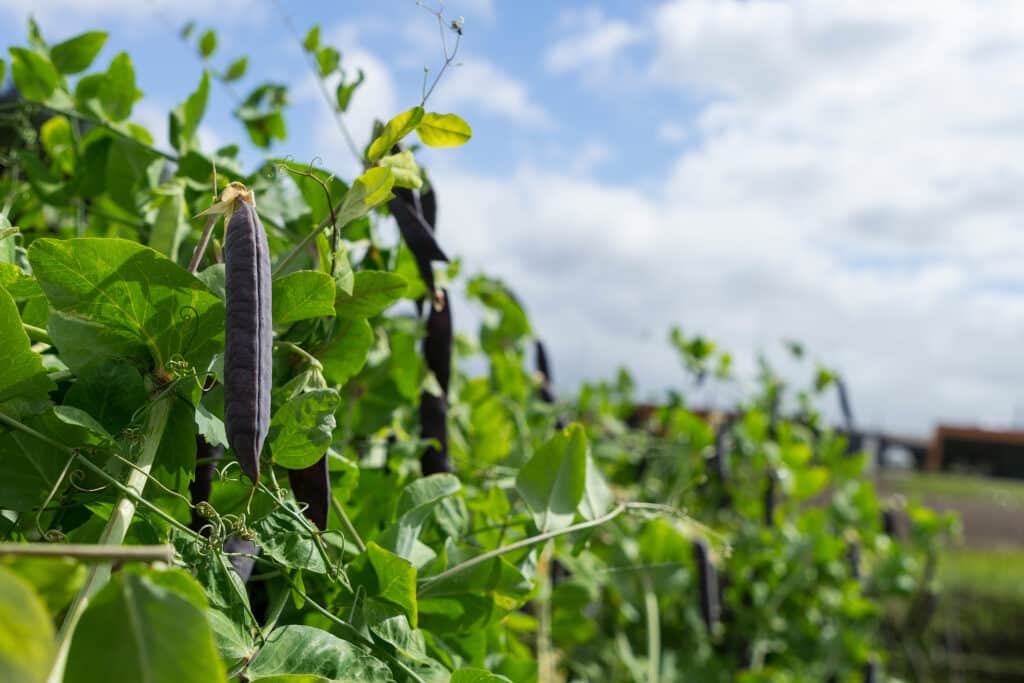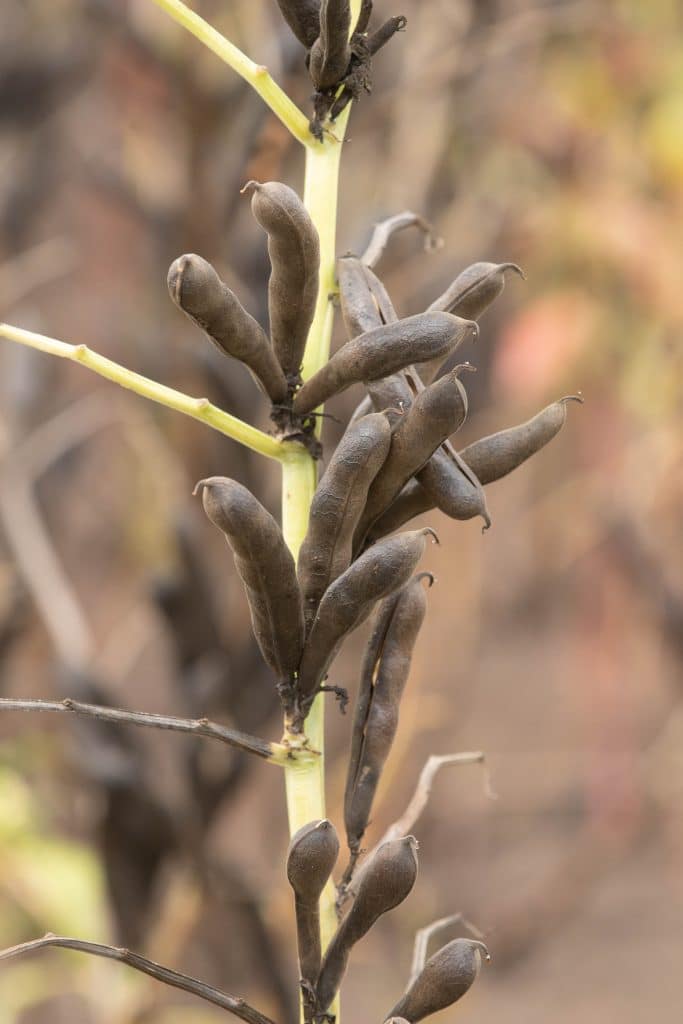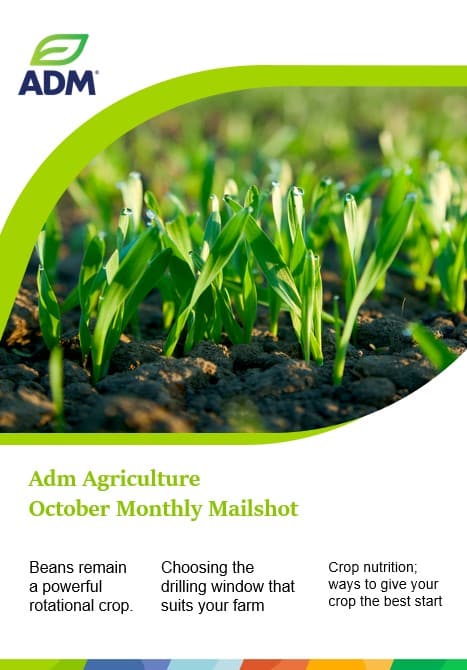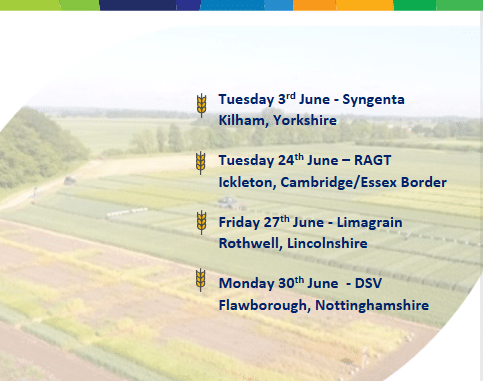As we move through October, attention turns to fine-tuning rotations and setting up crops for success in the year ahead. Beans continue to hold a strong place in the rotation — not only supporting soil health and nitrogen management but also offering access to the valuable human consumption premium when quality targets are met. In this month’s update, we also share guidance on perfecting your drilling date to maximise establishment and yield potential, and what seed treatments could help you get the most from your crops.
Setting Your Farm Up For Success

Beans remain a powerful rotational crop offering multiple agronomic and economic advantages:
- Nitrogen Fixation: Beans fix atmospheric nitrogen, improving soil fertility.
- Improved Soil Structure: Their deep root systems enhance soil health and help disrupt pest and disease cycles.
- Yield Potential: Both spring and winter beans deliver robust yields but differ in timing and management:
Spring beans provide flexible sowing windows, fitting well into a wide range of rotations.
Winter beans benefit from a longer growing period, often resulting in higher yields.

Winter Wheat Drilling Windows
Timing your winter wheat drilling is critical to achieving strong crop establishment, minimising disease risk, and maximising yield potential. In the UK, the recommended drilling window typically runs from mid-September through December. As we move into mid-late October – we look at the options still available.
- Mid to Late October Drilling:
- Positives: This window balances soil temperature and moisture well, allowing rapid germination and good seedling establishment.
- Negatives: Nevertheless, delayed drilling beyond this period can lead to increased vulnerability to diseases.
- November Onwards:
- Positives: Later drilling can reduce some foliar disease risks since cooler conditions limit pathogen development. Varieties with low vernalisation requirements, such as Skyfall, perform well in this window.
- Negatives: The main downside is slower emergence due to cold and wet soils. Delayed drilling also shortens the autumn growth period, reducing the crop’s ability to compete with weeds and build resilience against pests and diseases.
- Disease Control Considerations:
Regardless of drilling date, appropriate seed treatments—such as Latitude—are essential to protect young plants from soil-borne diseases like Take-all. Additionally, selecting disease-resistant varieties and practicing good crop rotation remain key strategies for managing disease pressure.
Latitude Seed Treatment – Delivering Strong ROI Even with Low Wheat Prices
With wheat prices under pressure, growers are scrutinising every input carefully. Latitude seed treatment continues to deliver a strong return on investment—especially in fields at high risk of Take-all disease.
Why Latitude?
- Latitude is the only registered crop protection product proven effective against Take-all, a root disease capable of causing yield losses of up to 50% in severe cases.
- Recent extreme weather events have increased Take-all prevalence across the UK.
- Latitude has demonstrated reliable performance for almost 25 years.
- Importantly, ROI remains strong—even when wheat prices dip.
Latitude ROI Calculator
To support growers in making informed decisions, Certis offers a simple, effective ROI calculator. By inputting your own figures, you can see tailored results that clearly demonstrate the value Latitude provides, regardless of current grain prices.
Why Beans Hold a Good Place in The Current Market
With beans being a comparatively cheap crop to grow,– and with today’s lower values for all crops, they offer a good alternative to consolidate input costs and allow you to focus on the cash crops in the rotation!.
Whether you’re planning to drill a winter or a spring crop, there are many great options there from a seed perspective, with the likes of Vincent or Vespa leading the charge for winter drilling, whilst varieties such as Lynx and Genius are a good opportunities for the spring drilling window.
If you are thinking of trying to make a human consumption market and capturing the associated premium, which this season varied from £15 – 20/mt – it is certainly worth looking at some of these larger seeded varieties, as they will be preferable for processing.
Whilst beans are a comparatively low- cost crop to grow, it is certainly worth making sure they get the best possible start. The pre-drilling application of fertiliser products such as Fibrophos or PolyHailite will support strong early – stage growth in the key establishment window, setting them up for the rest of the growing season and leaving the soil in as good a state as possible for the following crops, both in terms of structure and residual nitrogen.
Being a flowering crop, beans are also a great addition for pollinators and help support a wide range of on farm biodiversity. With good standing characteristics, especially on some Spring varieties.




